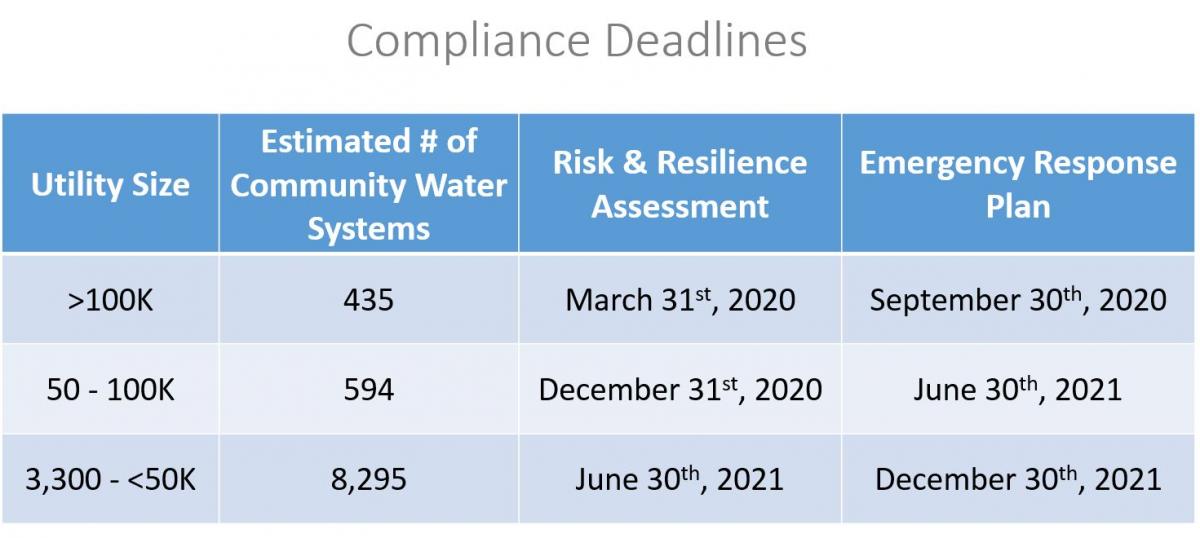AWIA of 2018: Where Do I Get Started?
Note: This is a second part in a series about the AWIA of 2018. Read the first part here.
 With Hurricane Sandy and Hurricane Harvey focusing increased attention on vulnerabilities and preparedness, the American Water Infrastructure Act of 2018 significantly broadens the scope of the 2002 Bioterrorism Act.
With Hurricane Sandy and Hurricane Harvey focusing increased attention on vulnerabilities and preparedness, the American Water Infrastructure Act of 2018 significantly broadens the scope of the 2002 Bioterrorism Act.
What are the basic requirements?
Sec. 2013 Community Water System Risk and Resilience: Replaces SDWA Section 1433 (2002 Bioterrorism Act) and requires two documents to be prepared and updated regularly for all Public Water Systems serving 3,300 people and more
Risk and Resiliency Assessment: Provides an all-hazards approach with relative probabilities of occurrences to critical utility assets at risk and develops associated management strategies to mitigate such risks
Emergency Response Plan: Offers guidance before and during emergencies, providing utility staff with well-defined response procedures intended to maintain service, minimize disruptions and restore service during times of crisis
Where to start?
Our approach to the AWIA requirements can be broken down into three phases:
Step A. Conduct A Risk and Resiliency Assessment: Assessment that provides an all-hazards approach with probabilities of occurrences to critical utility assets at risk and develops a management plan to mitigate such risks
Step B. Prepare An Emergency Response Plan: Guidance document used during emergencies that provides defined response procedures intended to maintain service, minimize disruptions and restore service during times of crisis
Step C. Certify Compliance with the Environmental Protection Agency: Water Utilities must certify through a letter providing evidence of approval or a resolution from a governing board showing that both the R&R Assessment and Emergency Response Plan have been completed and approved
How can Freese and Nichols help you?
We have AWWA trained staff on the latest AWIA requirements, and they have extensive experience with vulnerability assessments and emergency response plans on which the AWIA requirements were built. We offer multidiscipline capabilities to meet planning, regulatory, water resources, modeling, treatment and electrical/instrumentation needs to comply with AWIA.
Questions?
- Georgia Trooper Smith, PE
- North Carolina Brian White, PE
- Oklahoma Clay Herndon, PE
- Central Texas Kendall King, PE
- North Texas Scott Cole, PE, or Rusty Gibson, PE
- Southeast Texas Richard Weatherly, PE


